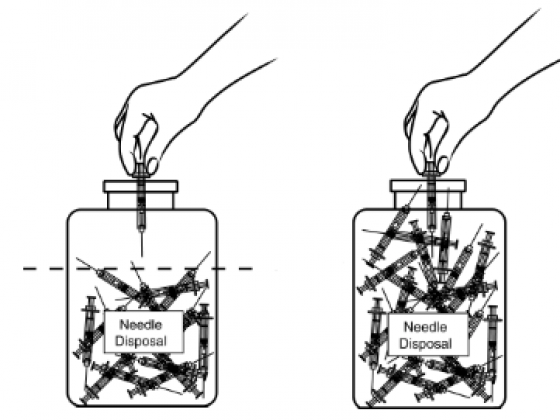Standard Safety Precautions
Published (updated: ).

Prior to working in healthcare, or even training to work in healthcare, a physical examination is usually performed to determine a baseline health status. Immunizations are assessed to be current. The following are examples of healthcare immunizations that are screened in pre-training and pre-employment screening:
- Tetanus
- Hepatitis B
- (MMR)Measles/mumps/rubella (German Measles)
- Chicken pox (varicella)
- Influenza
- Tuberculosis screening
The standards for hand washing are well established. Rinse your hands with water, apply soap, and lather for 15 seconds. Routine hand washing has been demonstrated to be the most effective form of infection control.
Standard Precautions are the minimum infection prevention practices that apply to all patient care, regardless of suspected or confirmed infection status of the patient, in any setting where health care is delivered. These practices are designed to both protect and prevent diseases from spreading infections among patients. Standard Precautions include —
- Hand hygiene.
- Use of personal protective equipment (e.g., gloves, masks, eye wear).
- Respiratory hygiene / cough etiquette.
- Sharps safety (engineering and work practice controls).
- Safe injection practices (i.e., aseptic technique for parenteral medications).
- Sterile instruments and devices.
- Clean and disinfected environmental surfaces.
Some of the equipment used in ambulance operations requires knowledge to ensure safe operation. Stretchers, defibrillators, and even the ambulance itself does not suffer fools. Many an EMS career has been ruined for lack of knowledge on the safe operation of the equipment utilized. The minute you don’t respect your ambulance or equipment could result in death for you or the patient.
The ambulance is an escape pod of sorts. It has the ability to make it’s own environment. Air conditioning when it’s hot and heat when it is cold. Outside the ambulance is where you will find your patient, often times in the sweltering heat or extreme cold. The EMS provider will be there with the patient. Whatever happened to the patient could happen to the EMS crew.

Bloodborne pathogens are a constant concern for EMS personnel. Sometimes the EMS crew will assess and manage a patient with profuse bleeding. The concern is always there. For these reasons EMS personnel are typically expected to keep up with their immunizations. Items that can penetrate the patients skin is called a sharp. Sharps are items such as needles, intravenous (IV) catheters, lancets, etc. After a sharp is used on a patient, it must immediately be placed in a sharps container.
